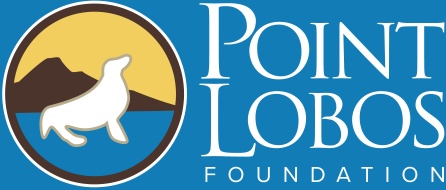Ports
PORTS is a free distance learning program that helps schools teach common core state standards in the context of California State Parks. It uses the power of California’s K-12 High-Speed Network (HSN) and the educational potential of live videoconferencing.
The PORTS program provides teachers and students with lesson plans, digital video, digital images and media materials from the program’s website. These materials prepare students and teachers to use PORTS to deliver real-time, two-way audio and video communication between the classroom and a State park This live videoconferencing allows park staff to look directly at students sitting miles away in a classroom and engage them in conversation.
In this way, PORTS gives students access to park experts regardless of the students’ geographic location or economic status. In 2015/2016 PORTS reached over 46,000 K-12 students in California, the majority of which were in schools federally classified at low-income.
These live, interactive presentations include science, history, language arts and other academics. They are part of fully developed units of study that include support and follow up.
“Treasuring the Kelp Forest” presented from Point Lobos State Natural Reserve is a relatively recent addition to the study units now available through PORTS.
The PORTS website at www.ports.parks.ca.gov provides more information about the program. This includes a description of some of the units of study available, as well as key State Parks contacts for the program.
Research
Made possible by the Richard Grand Foundation, the Point Lobos Foundation recently began facilitating natural resource research projects within Point Lobos State Natural Reserve in 2015. A collaborative effort on the part of the Point Lobos Foundation, the Monterey District of California State Parks (State Parks) and California State University Monterey Bay (CSUMB), the paid internships are restricted to graduate students.
Managed by environmental scientists at State Parks, the resulting data and recommendations will be used to assist State Parks in making management decisions and prioritizing rehabilitation projects at Point Lobos State Natural Reserve. The data will be stored in perpetuity to build an archive of real-time natural resource information necessary to protect Point Lobos for generations.
Vegetation Mapping
Vegetation is a very important natural resource within Point Lobos. Unique and varied plant communities and rare plants are one of the main draws for visitors and vegetation plays a critical role in the health of wildlife. Invasion by non-native species, high levels of visitor traffic, off-trail use and years of drought have impacted and continue to impact vegetation at Point Lobos. To learn more about these impacts and prioritize restoration projects to promote the health and diversity of vegetation at Point Lobos, vegetation mapping was the focus of a recent PLF-funded research project.
Wildlife Use of Shoreline and Human Disturbance
An ongoing and long-term project, this research focuses on documenting wildlife (marine mammal, shorebird, and seabird) use of the shoreline in Point Lobos State Natural Reserve. The presence and distribution of marine mammals, seabirds and shorebirds on the shoreline are being documented. Wildlife behavioral observations, including natural behaviors and those caused by visitor disturbances, are being recorded.
Mapping of Coastal Bluff Erosion and Impacts of Pedestrian Use
This study involved mapping and measuring human and naturally caused erosion on the coastal bluffs along the shoreline at Point Lobos. A trail impact assessment was completed for all of the trails with common impacts including vegetation loss and compositional changes, soil compaction, erosion, muddiness, exposure of plant roots, trail widening, and the proliferation of visitor-created side trails. Ideal trail realignment recommendations were made and impacted trails were prioritized based on the level of need.
Request a Research Permit
Research within Point Lobos State Natural Reserve and the surrounding marine protected areas requires permitting. To request a permit, please send email to info@pointlobos.org
Resources
Audubon Society of Monterey
Big Sur Land Trust
California Marine Sanctuary Foundation
California Native Plant Society
California State Coastal Conservancy
California Department of Fish and Wildlife
California State Department of Parks and Recreation
California Wildlife Conservation Board
Carmel Heritage Society

